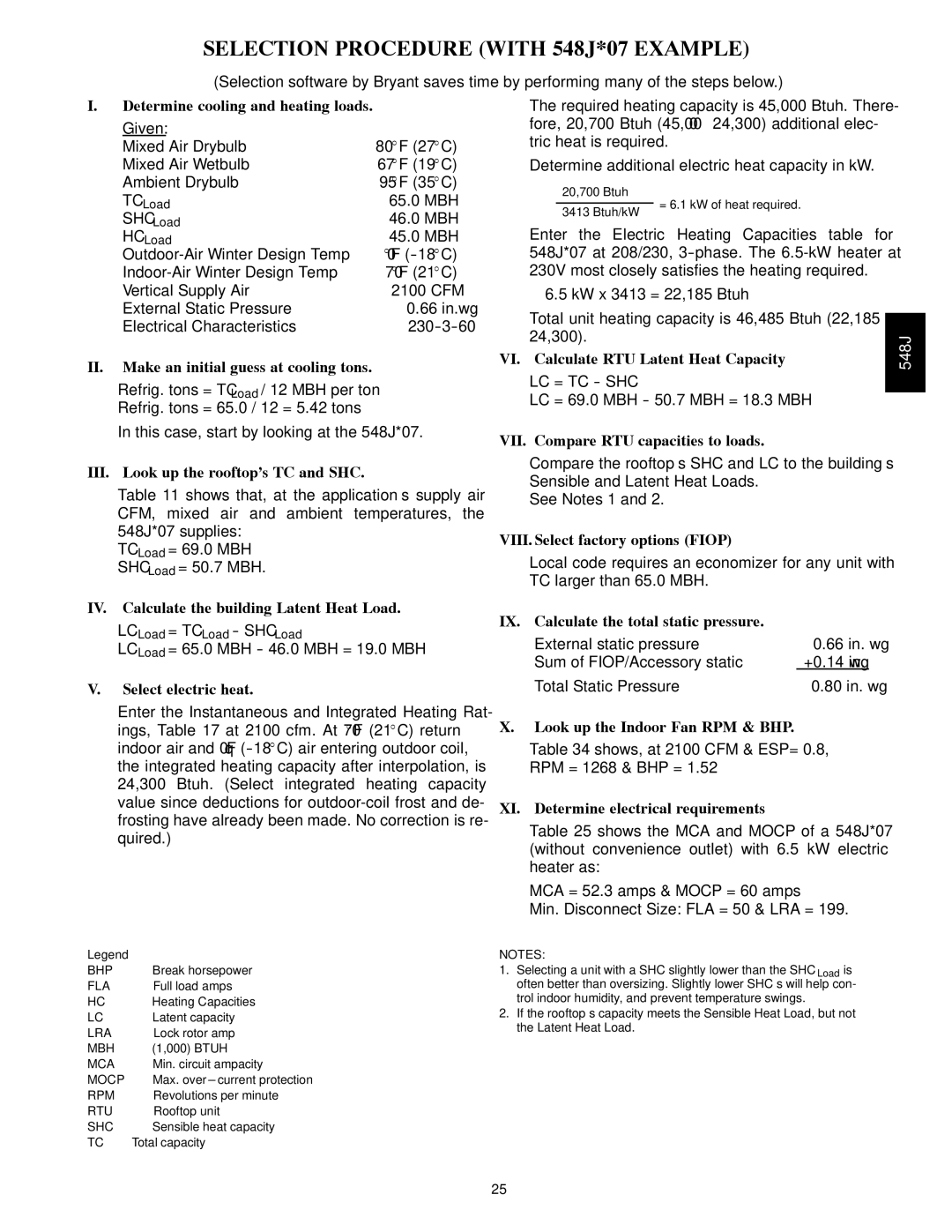548J specifications
The Bryant 548J is a high-efficiency gas furnace that combines advanced features and technologies to provide exceptional heating performance. Designed for residential applications, the furnace is notable for its ability to deliver consistent warmth while ensuring energy efficiency and reliability.One of the main features of the Bryant 548J is its ultra-high efficiency rating, which allows homeowners to save significantly on energy costs. With an Annual Fuel Utilization Efficiency (AFUE) rating of up to 96.5%, this furnace is designed to convert a large portion of fuel into usable heat. This is a remarkable characteristic that not only reduces utility bills but also contributes to a lower environmental footprint.
The 548J is equipped with a modulating gas valve and a variable-speed blower motor. The modulating gas valve enables the furnace to adjust its heating output based on real-time temperature demands, ensuring a more precise heating experience. This results in reduced temperature fluctuations within the home, providing a comfortable living environment. The variable-speed blower motor works in tandem with the modulating valve, facilitating improved air circulation and efficient temperature control.
Additionally, the Bryant 548J features a durable and compact design, making it suitable for various installation spaces. Its quality construction ensures longevity, while the optional stainless steel heat exchanger enhances its reliability. The furnace also includes a quiet operation mode, which minimizes noise levels, ensuring that the unit works quietly in the background without disturbing the household's peace.
Integration with smart home technology is another advantage of the Bryant 548J. Homeowners have the option to connect the furnace to a Wi-Fi-enabled thermostat, allowing for remote temperature control and monitoring. This feature offers enhanced convenience and the ability to optimize energy use according to a homeowner’s schedule.
For peace of mind, the Bryant 548J comes with a range of warranties, protecting the consumer's investment. Bryant’s commitment to quality is reflected in their extensive primary heating testing procedures, which ensure that each unit meets strict performance criteria before it reaches the customer.
In summary, the Bryant 548J is an efficient and reliable gas furnace that embodies advanced heating technology. With features such as high AFUE ratings, modulating gas valves, variable-speed blowers, and smart home compatibility, it stands out as a formidable option for modern residential heating solutions.
